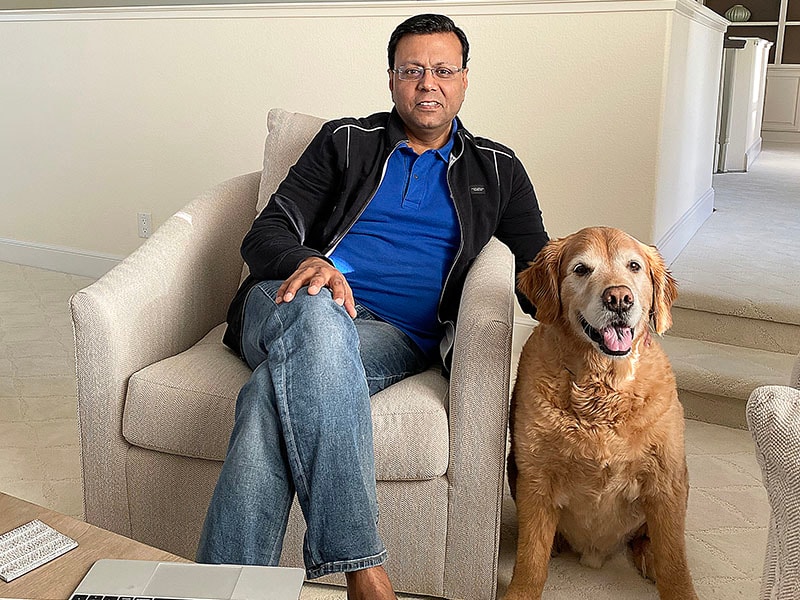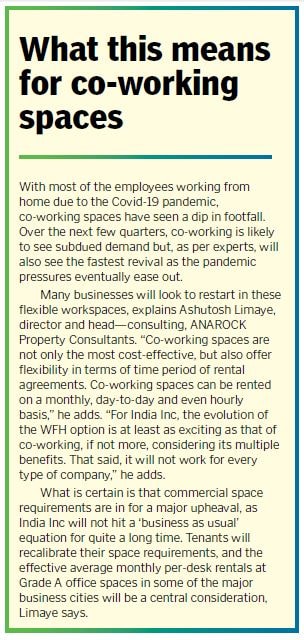
India Inc CEOs see work from home advantage, long term
Prominent leaders such as Rahul Agarwal of Lenovo, CP Gurnani of Tech Mahindra and Nivruti Rai of Intel say that they are actively considering a hybrid model, with sporadic jaunts to the office, well beyond the lockdown
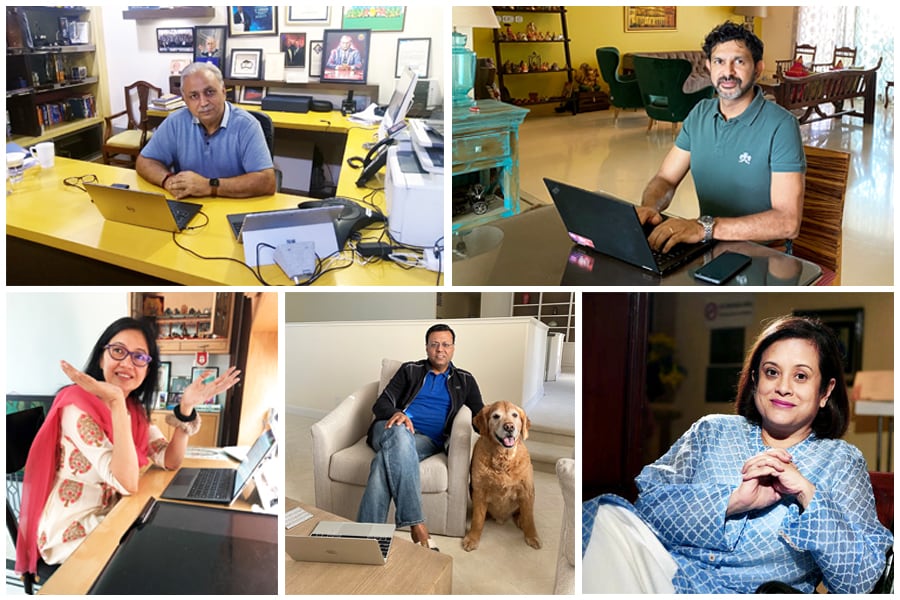 After over a month of the nationwide lockdown, India Inc’s top leaders say they are beginning to consider a work from home or hybrid model even for the long term
After over a month of the nationwide lockdown, India Inc’s top leaders say they are beginning to consider a work from home or hybrid model even for the long term
At 6.30 pm sharp, just as everyone else is winding up work, Damini Nair, 27, logs in to her desktop. Nair, who works with a global IT services major, has been working the graveyard shift from home for over a month. She does miss going to an office, though, considering she is working 11 hours now versus the regular nine because of poor internet connectivity.
Like Nair, most of the country has rapidly moved to working from home full time, thanks to the nationwide lockdown. The mode of work has received mixed reactions—some, like Nair, find it difficult to adapt to without adequate infrastructure; while others, saving on commute time and finding themselves more efficient, can no longer imagine sitting at an office desk all day.
A majority of companies—especially those in the tech space—are actively considering how this months-long transition might change the way they work in the long term. For instance, Tata Consultancy Services (TCS) recently said that as much as 75 percent of their 3.5 lakh employees will work from home by 2025. “We call this philosophy 25x25, which means only 25 percent of our employees may have to be in office to ensure that 100 percent are productive,” N Ganapathy Subramaniam, chief operating officer and executive director, TCS, said while addressing a press conference on quarterly earnings recently.
We spoke to corporate India’s prominent leaders to get their views on whether the work from home (WFH) culture is here to stay at their companies, and whether India is prepared to embrace it. Here’s what they had to say.
We would like 25% of employees to work from home long term: CP Gurnani, MD and CEO, Tech Mahindra
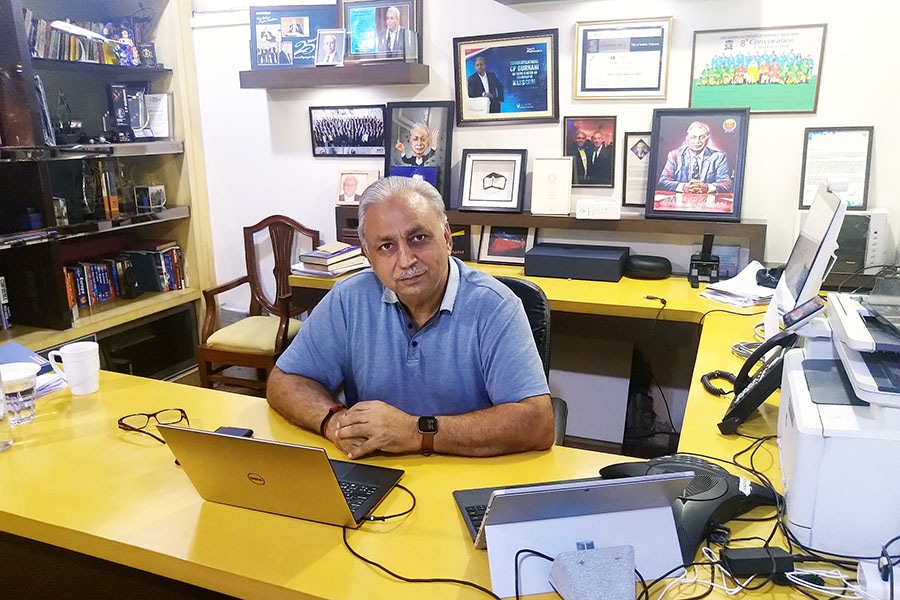
Image: Vipin Rana
We have had a formal work from home policy in place for a long time, and most of our leaders and associates have made use of it—but of course, not at this scale, and not all at once. Frankly, we were apprehensive in the initial days of the lockdown, but our teams have stood up to the challenge, and we are working at near pre-Covid productivity levels, and, in some cases, exceeding them. Currently, 94 percent of our work is being delivered from home.
Every model of working has its pros and cons. While circumstances will force us to work in isolation for some time, we must also realise that human creativity and teamwork thrives on social interactions. So yes, a hybrid model will exist. It could be limited visits to office for social distancing reasons to start with and, as we use more collaboration tools and get used to lone working, I believe we will move permanently to a hybrid model. Technology solutions will quickly evolve but it is the human angle that will be important to watch.
The paradigm of leadership in this new normal has changed and the challenge for leaders is to adjust their mindsets from ‘command and control’ to ‘mentor and inspire’.
We ourselves are looking at about 25 percent of our employees working from home in the long term. In our industry, productivity and deliverables will not be impacted by this—and might be enhanced, in fact.
Covid-19 has enabled us to create a proven model that can serve a larger workforce of women and persons with disabilities, and enable tech firms to tap into talent from rural India—a workforce from Bharat. Yes, the hybrid model is here to stay.
Changes in work culture were visible even before the outbreak: Rahul Agarwal, CEO and MD, Lenovo India
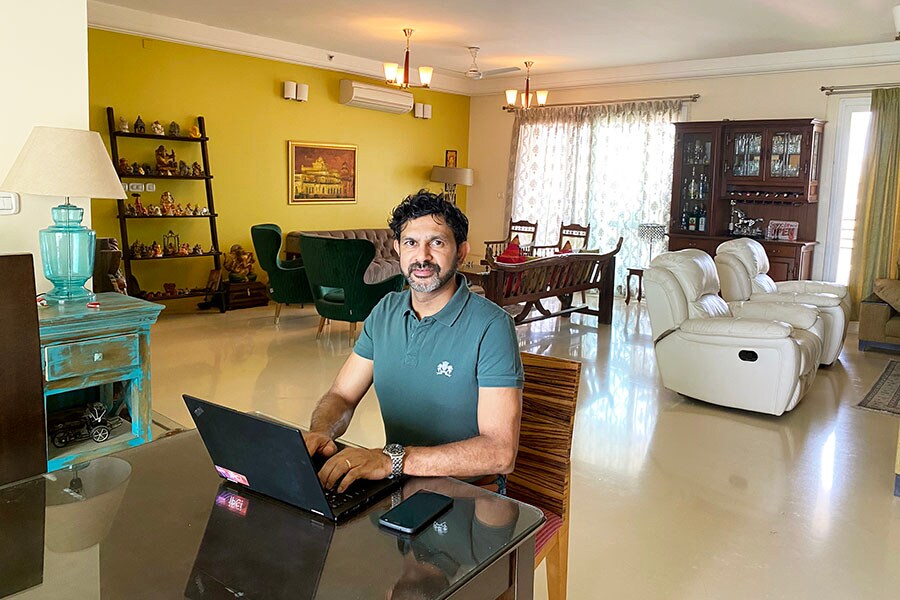 Image: Manisha Agarwal
Image: Manisha AgarwalThe situation we are in right now is not only confirming that our technology investments have been valuable, but also that the workforce will move to a remote direction in the years to come. However, it is too early to measure a productivity impact.
There are, of course, challenges in working remotely. Lenovo research shows that people cite distractions (42 percent), and blurring work and life boundaries (32 percent) as top reasons to dislike WFH. Having said that, most people feel more peaceful and productive at home. Lenovo also recently released global research on the impact of the coronavirus on workplace engagement, which shows that employees and businesses are ready to adapt to WFH arrangements. It’s a pleasure to know that this is true for our Indian employees too. In the future, we may move to a hybrid model.
We have not been a remote working country culturally, and managers will need to rewire their thinking. Management will have to realise that good people will work well wherever they are—and the others will not, wherever they are. You can’t monitor people in the new world. The focus should be on output and not on the activity. By trusting employees, you empower and motivate them more.
I think the changes in work culture were visible even before the pandemic hit. Technology capabilities had already ushered in a new global workforce that stayed connected in a work-from-anywhere world. This will now accelerate, especially in new age and tech companies. I just hope there is more innovation in video conferencing soon, and we are able to have 3D interactions.
I’m hopeful work from home will fix talent, gender and diversity gaps: Debjani Ghosh, President, Nasscom

There’s tremendous benefit to working from home. We’ve seen productivity go up and hopefully, it’ll stay up in the long run. One thing we have found is that when you are working online, it is truly a collaborative process.
Having said that, some issues still exist—last-mile access, connectivity, cyber security and so on. This is also a good time for the government to focus on power supply problems. These are some issues India will need to sort out before work from home can become a long-term model.
We expect that most large companies will put a hybrid model in place. IT services companies will dominate here, while business process management (BPM) and smaller companies might not be able to entirely. But I do think we will see a blended model becoming the new norm.
I’m very hopeful that work from home will fix the talent gap that companies and industries have.
The thing to remember, as men and women work from home, is that men realise that work from home is not just to sit in front of the computer, but to equally pitch in with daily household chores. We will see a lot of changes towards bridging the talent gap, the gender gap and the other diversity gaps, to a very large extent.
'The future of WFH will depend on how long the Covid-19 outbreak lasts': Ashish Chauhan, MD and CEO, BSE (formerly Bombay Stock Exchange)
(This story appears in the 22 May, 2020 issue of Forbes India. To visit our Archives, click here.)
